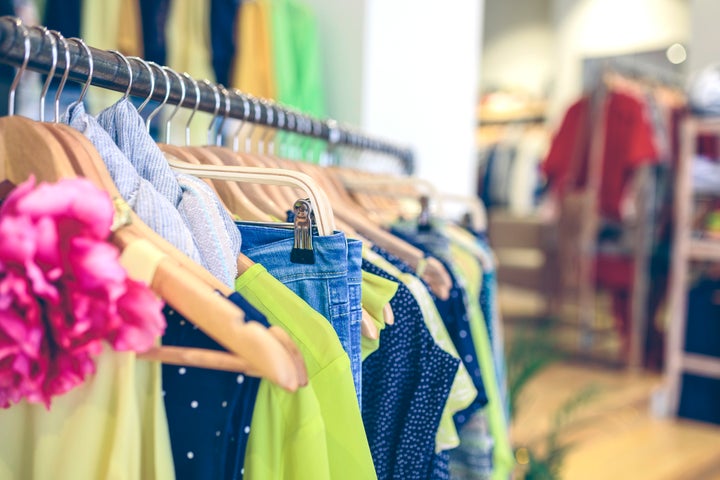
When buying a new piece of clothing, you probably think you can get away with wearing it right away, without a proper wash, because only a few people have tried it on. Think again.
According to Philip Tierno, professor of microbiology and pathology at New York University, the number of people who have tried on that blouse you bought or that dress you decided to splurge on might actually be a lot higher than you think.
“It’s not four or five or six people; it’s dozens and dozens ... if that garment sits there for weeks or a month,” he said.
Of course, that number depends on many factors, such as the size of the store and the speed at which an item sells. But do you really want to wear something that even one stranger has tried on?
Tierno has conducted studies in which he tested clothing (blouses, pants, dresses, swimsuits, underwear, etc.) from popular chain stores and high-end fashion businesses for bacteria and other germs left behind by shoppers who tried an item on but didn’t buy it. In his research, he’s found clothing with norovirus, bacteria including strep and staph, and even fecal germs.
Tierno said there are three main ways we spread germs: from our skin, respiratory tree (think mouth and nose) and anus. If you touch clothing that has germs on it and then touch your mouth, eyes or nose, you’re putting yourself at risk.
To be clear, that risk is “very low” when it comes to getting a significant infection, according to Tierno. Still, the possibility is there, especially if you have broken skin from a cut.
He added that, germs aside, many clothing items are also treated with chemical-finishing agents and dyes that can irritate the skin, which gives you another reason to head to the laundry room before wearing your new look.
Dr. Meghan Feely, a board-certified dermatologist who practices in New Jersey and Manhattan, is familiar with chemicals in clothing that can cause reactions. She often treats clients who have contact dermatitis and helps them determine the origin of their rashes and other irritations, including if it’s an allergic reaction.
She told HuffPost that these irritations can occur within hours or days of exposure to clothes that have been “washed with a particular detergent or processed with a particular chemical additive, dye, resin or tanning agent” before being put in stores. For example, she has seen formaldehyde, which is used in “wrinkle-free” clothing, cause allergic reactions in clients.
She told HuffPost that if the reaction is because of an allergy, washing can help, but the clothing should likely not be worn again. For other reactions, there are some chemicals you might want to avoid altogether or might require multiple washings or specific cleaning products, so it’s important to do your research on different clothing brands and what chemicals they might use.
Feely recommends using a detergent and fabric softener that are fragrance-free and dye-free. “Run the wash through an extra rinse cycle to help wash off these detergents,” she said.
Tierno agreed that it’s a good idea to send new clothing through a washer and dryer cycle or have them dry-cleaned, depending on the item. “Obviously you’re not going to subject a silk garment to your washing machine,” he said. “You’ve got to use common sense also.”
Dr. Krista Lauer, national medical director for Larada Sciences and Lice Clinics of America, echoed Feely’s and Tierno’s concerns about cleaning new clothes and added that trying on hats has its own risk: Head lice, typically spread from direct head-to-head contact, can also be transmitted when trying on a hat that someone with lice had tried on.
Again, when trying on clothes, the risk of infecting yourself with something serious isn’t alarming, but it’s easy to protect yourself. It’s best to wash your hands properly after a fitting room session, especially before you eat, drink or touch your face.
Wearing that new outfit will come soon enough. And it’ll look even better without a rash as an accessory.